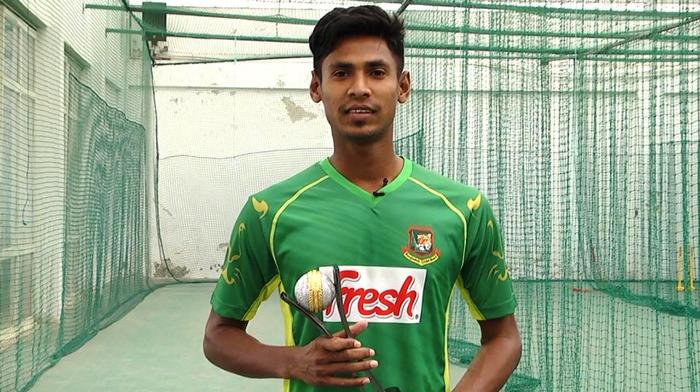After resigning as president of International Cricket Council, AHM Mustafa Kamal has divulged details of the irregularities during the World Cup quarter-final match between Bangladesh and India.
He says Spidercam was not used in the match and the on-field umpires did not seek the third umpire’s assistance to confirm the ‘no-ball’.
The video footage was not zoomed to confirm whether fielder Shikhar Dhawan’s feet touched the boundary rope as he took Mahmudullah’s catch .
The giant screen at the iconic Melbourne Cricket Ground even displayed slogans supporting India right from the start of the match.
Kamal spoke to journalists at a press conference in Shahjalal International Airport immediately after his return on Wednesday.
“I observed several things during the match. After reaching the ground I saw the match will be played without the Spidercam for the first time. Since then, controversial decisions came one after another.”
Mashrafe Bin Mortaza and Co crashed out of the World Cup losing in the match on Mar 19. The Bangladesh Cricket Board officially complained to the ICC over umpiring in the match the following day.
On-field umpires Aleem Dar and Ian Gould gave a ‘controversial’ no-ball decision in favour of India, who won the toss and elected to bat, in the 40th over of the match.
Rubel Hossain bowled a full-toss that India’s opener Rohit Sharma pulled straight to Imrul Kayes at deep midwicket. But leg-umpire Dar signalled a no-ball for height to Gould, leaving the Bangladesh cricketers appalled by the decision.
Later in the match, Mahmudullah was caught by Dhawan on third attempt after juggling the ball on the edge of the deep third man boundary.
Replays of the dismissal were inconclusive as the zoom feature was not utilised to confirm whether or not the fielder’s foot was touching the rope.
The umpires were under fire for their decisions as protests escalated in Bangladesh.
“I won’t say the mistakes were deliberate, I did not say so on that day. Umpires are humans, they make mistakes,”said Kamal.
“Had technology been fully utilised, we would’ve been able to assess the umpires’ decisions, the standard of umpiring would have been better that day.”
Rubel’s ball was adjudged a no-ball for being high above the batsman’s waist without consulting with the third umpire.
The ICC issued a statement the following day saying ‘the umpire’s decision is final’ and that the no-ball decision was a ‘50-50 call’.
But the game’s governing body did not explain why the umpires had not reviewed the decision through a TV replay.
Kamal protested against the slogans displayed in support of India on the giant screen, which is under the ICC’s control, during the match.
“As soon as the giant screen displayed ‘jitega bhai jitega, India jitega’ (India will win, brothers) after the match started, I asked ICC’s CEO (David Richardson) – ‘you should stop this’. He asked the commercial manager to turn it off, but it didn’t.”
Kamal had called the ICC ‘Indian Cricket Council’ and said he would step down as president, if needed, after the match.
Then a massive spat erupted between Kamal and ICC Chairman N Srinivasan, who violated ICC practice and presented the World Cup to winners Australia at Melbourne last Sunday.
Normally, ICC presidents do the honours, but Srinivasan used Kamal’s outburst against poor umpiring in the India-Bangladesh match and got others to support his decision to present the trophy at the presentation ceremony.
Kamal was not on the dais during the ceremony and Srinivasan was booed heavily by sections of the record 93,013-strong crowd at the Melbourne Cricket Ground.
He had earlier threatened to reveal some of ICC’s ‘dark secrets’ after the spat.
Source: Bd news24










